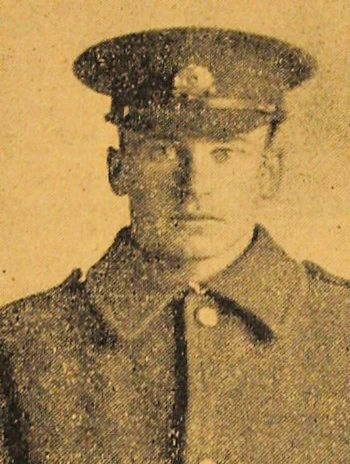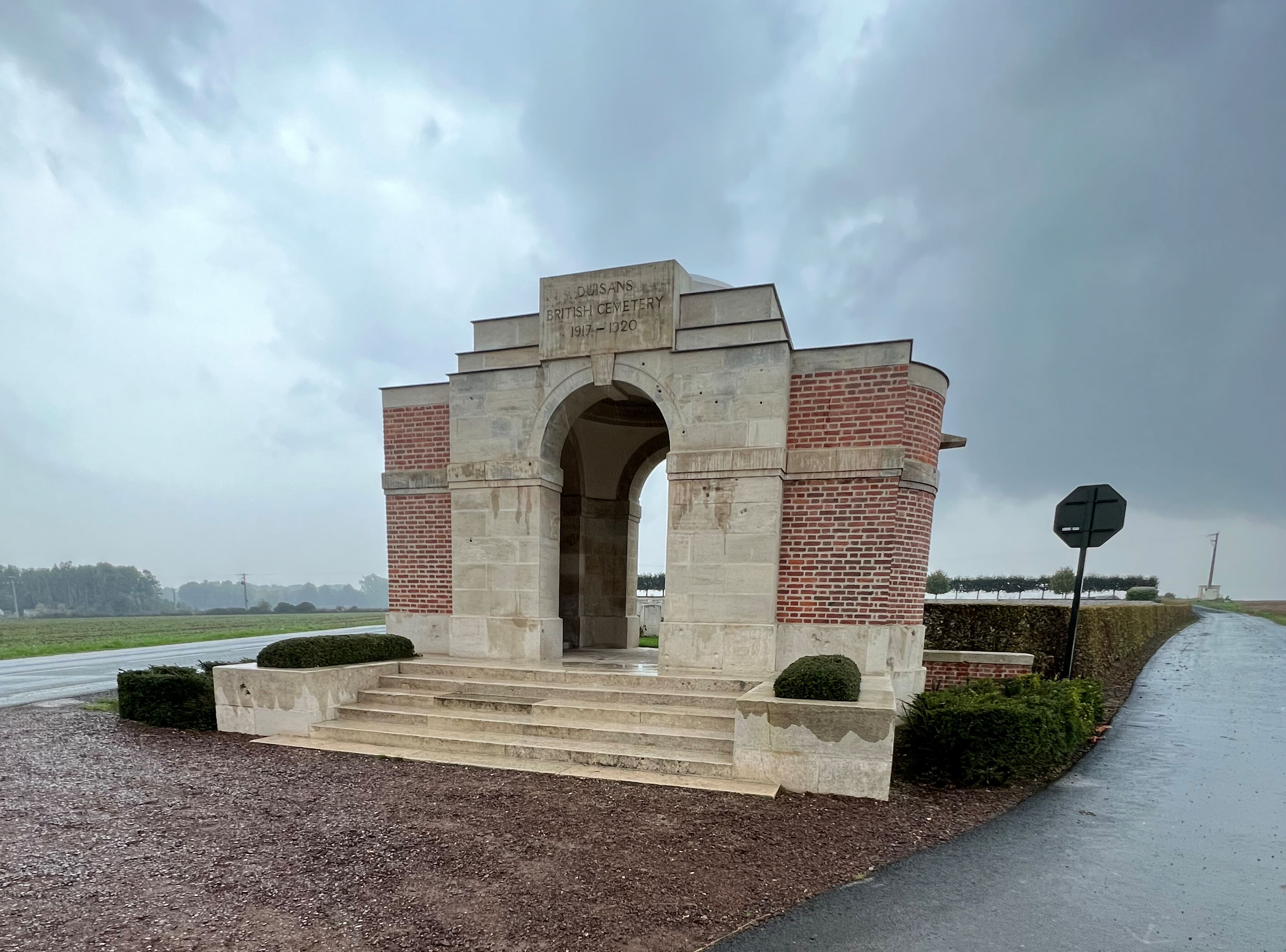Name
Albert James Clements
Conflict
First World War
Date of Death / Age
21/04/1917
23
Rank, Service Number & Service Details
Private
15519
Bedfordshire Regiment
4th Bn.
Awards: Service Medals/Honour Awards
Not Yet Researched
Cemetery/Memorial: Name/Reference/Country
DUISANS BRITISH CEMETERY, ETRUN
II. P. 11.
France
Headstone Inscription
Not Researched
UK & Other Memorials
Standon War Memorial,
St Mary’s Church Memorial, Standon,
Puckeridge Memorial Plaque, Standon Village Hall, Standon
Biography
Albert James Clements was Private No. 15519 in the 8th and 4th Battalions, Bedfordshire Regiment, and died of wounds on 21st April 1917 at the age of 23.
He is commemorated at Duisans British Cemetery, Etrun, Pas de Calais, France, grave ref: ll. P. 11.
Both he and his brother, Clarry (Ernest), died on the Western Front within the space of seven months. They were both in the Bedfordshire Regiment, together at first in the 8th Battalion, later, following hospitalisation, he was moved to 4th Battalion.
Born in Holloway, he was the second son of Marion and Ernest Clements of The Forge, Standon. His father was the village blacksmith. He was one of nine children. His parents both originated from Witney, Oxfordshire, but had moved around, to Worcester, where their eldest son was born, and to Holloway in London, where the next three children were born.
By the 1901 census the family had settled in Standon, where the rest of the children were born.
The 1911 Census finds him working as a blacksmith with his father at The Forge, Standon.
Having enlisted with his brother, and other local lads on 7th September 1914, his army life paralleled his brother (see the information for Ernest J Clements). Bert however, had suffered from fevers, possibly what was known as Trench Fever, resulting in him being sent home to England, and spending some time at Napsbury Hospital at St Albans, where his family were able to visit him. He probably also spent some time recovering at home in Standon, as there is a gap in the correspondence after his elder brother was killed, and being at home, of course, he would not need to write. The next letter was dated 28th December 1916, telling his mother he was safe and ‘got back’ to Felixstowe. This could mean he had been at home for Christmas.
Sometime before 14th February 1917 he was shipped back to France, and wrote saying he had not yet been in the trenches. Bert moved to the 4th Battalion in late February, they were part of the 63rd Royal Naval Division who defended their claim of being the best British Division with a passion. Bert would have been one of many arriving as replacements for the casualties suffered during operations on the Ancre that month. Intensive training for the coming involvement in the Arras offensive in April & May ensued. This battle was to have the highest daily casualty rate in the British Army.
A letter to his mother dated 28th February 1917 states ‘we are in a different Battalion now, the 4th Batt Beds Regt B Coy 7 Platoon. Me and B. May are in the same platoon together.’ Bert and his new colleagues were moved towards the lines around Arras in early April, in readiness for the launch of a new campaign. Bert’s Medal Roll and other records reflect that he died of his wounds, probably received whilst the Battalion moved into their positions ready for the assault against Gavrelle on 23rd April.
He lies in the Duisans British Cemetery, Etrun, 9 km West of Arras, which had been home to the 8th Casualty Clearing Station, and was probably where he died.
Acknowledgments
Di Vanderson, Jonty Wild



